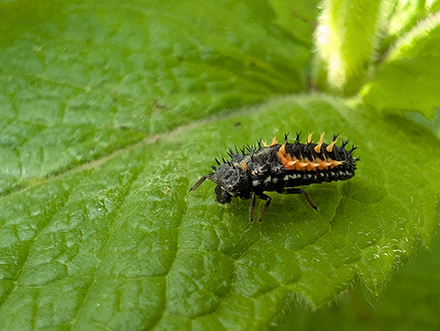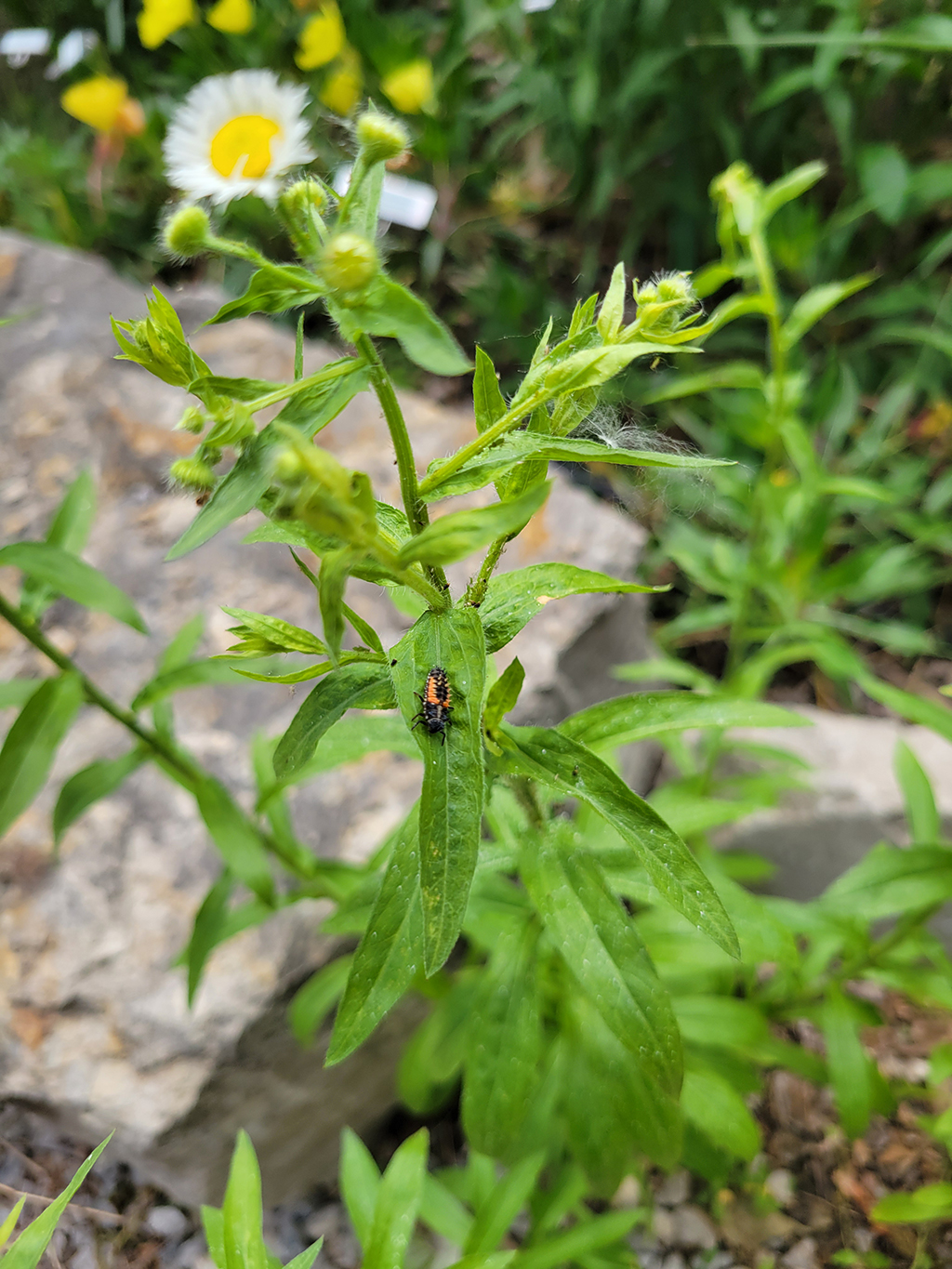Instead of Spray, Let Nature Lead the Way!
Some days in my field of work, it feels like the message is brushed aside. No matter how often it gets said, people enjoy doing the opposite. Could you be one of these individuals? What if I told you that when you see pests on your plants, the last measure you should take is spraying insecticides? That’s right, it should be your last line of defense, not your opening line of attack. Your role in this process is crucial, and your decisions can make a significant impact.
Of course, there are exceptions to the rule; it depends on the pest and the plants involved. You wouldn’t want to leave a pest population with no natural predators or be in such high numbers that a couple of days could be the difference in killing off your crop. Lately, calls have been coming to me about aphids and caterpillars on landscape plants. And my gut reaction is to say, “Do nothing.” Specifically, I got a call asking what to spray on aphids on bush honeysuckle. Spray? Those aphids are doing you a favor, and by doing nothing, you might be helping yourself in the long run.
 Let’s talk about IPM (integrated pest management). One key concept of IPM is understanding the economic or aesthetic threshold of your landscape. Chemicals can be expensive, and the quantity you need to have effective control can quickly run up the tab at your local department store. To justify that cost, you need to know how much “profit” you are getting out of your plants. This mainly applies to people who sell produce or potted plants, but profit for garden owners can be less tangible, like aesthetic value, environmental impact, or time and labor. If you must spray three times over the growing season, it takes you 2 hours each time to get the control you are looking for, and you also harm beneficial insects in the process. Was it worth spraying at all?
Let’s talk about IPM (integrated pest management). One key concept of IPM is understanding the economic or aesthetic threshold of your landscape. Chemicals can be expensive, and the quantity you need to have effective control can quickly run up the tab at your local department store. To justify that cost, you need to know how much “profit” you are getting out of your plants. This mainly applies to people who sell produce or potted plants, but profit for garden owners can be less tangible, like aesthetic value, environmental impact, or time and labor. If you must spray three times over the growing season, it takes you 2 hours each time to get the control you are looking for, and you also harm beneficial insects in the process. Was it worth spraying at all?
Contrast that scenario with one where you do nothing. Your plants look a little bad, but you start noticing lacewing and lady beetle larvae. There might be fewer flowers. However, the plants are still buzzing with life. This is the beauty of natural pest control- it provides habitat and food for some of our local predator insects and birds, creating a thriving ecosystem in your garden.
Initially, spraying the pest you find on your plants removes a food source for the beneficial insects, inadvertently harming them. This will naturally lower their numbers as the season progresses. Meanwhile, the pest populations have much shorter turnaround times. Aphids can give birth to nymphs, bypassing the egg stage. In one year, there can be up to 15 generations of aphids. This is why, in the absence of natural predators, these populations explode in a short amount of time. Predators may have only 2 to 4 generations per season, with far fewer offspring. The benefit of having these predators around is that one lacewing larva can eat around 150 aphids weekly. 
That example is only one of many interactions between wildlife that can be interrupted by spraying insecticides. Many insects have predators in the landscape that keep populations below the threshold. These predators can be ordered from an online retailer if you don't see any. The greenhouse industry regularly orders predatory mites, lacewing larvae, and mealybug destroyer beetles to handle pest populations during production.
So next time you are ready to bust out your witches' brew of chemicals, really assess if it will be worth your time, energy, and money. Consider the long-term benefits of natural pest control methods and the thriving ecosystem they can help create in your garden.
by Markis HIll, Horticulture Ornamentals and Turf Agent, 2025